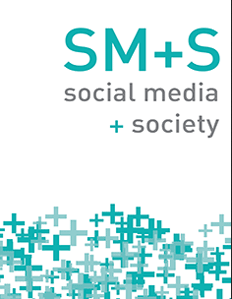# stoppline3话语中的动员和潜伏期动态
IF 5.5
1区 文学
Q1 COMMUNICATION
引用次数: 0
摘要
2014年,加拿大安桥石油公司(Enbridge)提议更换其3号管线后,活动人士开始抗议其环境风险和侵犯原住民权利等问题。随着管道建设的推进和抵制的加剧,在#停止管道3号标签下,网上出现了类似的讨论。本研究探讨了该话语的时间演变及其与实地发展的一致性。具体来说,我们评估了话语是否符合由Melucci启发的集体行动的阶段模型,该模型认为社会运动在可见和潜伏阶段之间振荡。这种振荡是由关键的动员事件介导的,这些事件促使积极分子集中精力与目标作斗争。一旦达成决议(积极的或消极的),运动就会进入一个潜伏阶段,在这个阶段,参与者重新组合,反思,并建立团结。这种模式背后的思想是在数字化转变之前发展起来的。鉴于社交媒体如何使时间性复杂化,尚不清楚该模型如何很好地解释在线话语抵抗。我们使用# stoppline3作为案例研究来测试阶段模型,检查2016年至2023年间发布的所有带有标签的推文。我们根据整体活动的高峰和低谷将数据分解为时间片段,并探索推文内容和参与形式如何从一个片段转移到另一个片段。与模型一致,我们发现区段之间的转移是由关键事件介导的;然而,我们也发现Twitter话语始终倾向于以动员为导向的参与形式和内容,而不是延迟。我们的研究结果表明,Twitter主要促进了动员工作,并提出了延迟工作的重要性,它是什么样子的,以及它在Twitter等平台上发生的位置。我们认为Twitter可能不是延迟过程的有效场所,或者可能改变这些过程的表现方式。总的来说,我们对阶段模型在# stop pline3和其他类似的面向公众的话语中的应用感到困惑。本文章由计算机程序翻译,如有差异,请以英文原文为准。
Mobilization and Latency Dynamics in the #StopLine3 Discourse
After the Canadian oil corporation Enbridge proposed replacing its Line 3 pipeline in 2014, activists began protesting against its environmental risks and violations of Indigenous rights, among other concerns. As the pipeline’s construction progressed and resistance intensified, a parallel discourse emerged online under the hashtag #StopLine3. This study explores the temporal evolution of that discourse and its alignment with on-the-ground developments. Specifically, we assess whether the discourse conforms to a phasic model of collective action inspired by Melucci, which contends that social movements oscillate between phases of visibility and latency. This oscillation is mediated by key mobilizing events, which drive activists to focus their energy toward fighting a target. Once a resolution is reached (positive or negative), the movement progresses into a latent phase, where participants regroup, reflect, and build unity. The ideas behind this model were developed before the digital turn. Given how social media complicates temporality, it remains unclear how well the model explains discursive resistance online. We use #StopLine3 as a case study to test the phasic model, examining all tweets with the hashtag posted between 2016 and 2023. We break up the data into temporal segments based on peaks and lulls in overall activity and explore how both tweet content and forms of engagement shift from segment to segment. In line with the model, we find that the shifts between segments are mediated by key events; however, we also find that the Twitter discourse consistently favors mobilization-oriented forms of engagement and content over latency. Our results suggest that Twitter primarily facilitates mobilization work, and call into question the importance of latency work, what it looks like, and where it takes place on platforms such as Twitter. We argue that Twitter may not be an effective venue for latency processes, or alternatively, may alter how those processes manifest. Overall, we trouble the application of the phasic model to #StopLine3 and other similar public-facing discourses.
求助全文
通过发布文献求助,成功后即可免费获取论文全文。
去求助
来源期刊

Social Media + Society
COMMUNICATION-
CiteScore
9.20
自引率
3.80%
发文量
111
审稿时长
12 weeks
期刊介绍:
Social Media + Society is an open access, peer-reviewed scholarly journal that focuses on the socio-cultural, political, psychological, historical, economic, legal and policy dimensions of social media in societies past, contemporary and future. We publish interdisciplinary work that draws from the social sciences, humanities and computational social sciences, reaches out to the arts and natural sciences, and we endorse mixed methods and methodologies. The journal is open to a diversity of theoretic paradigms and methodologies. The editorial vision of Social Media + Society draws inspiration from research on social media to outline a field of study poised to reflexively grow as social technologies evolve. We foster the open access of sharing of research on the social properties of media, as they manifest themselves through the uses people make of networked platforms past and present, digital and non. The journal presents a collaborative, open, and shared space, dedicated exclusively to the study of social media and their implications for societies. It facilitates state-of-the-art research on cutting-edge trends and allows scholars to focus and track trends specific to this field of study.
 求助内容:
求助内容: 应助结果提醒方式:
应助结果提醒方式:


